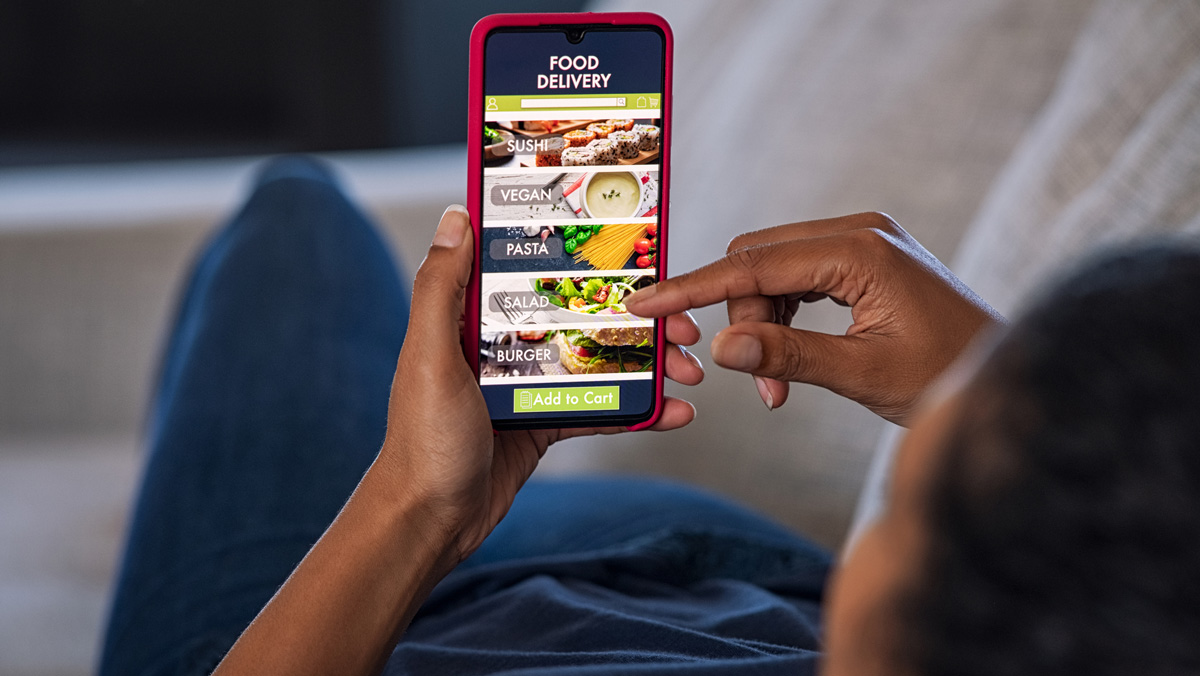The COVID Effect on Consumers
FIRST News
 By Nancy Mann Jackson
By Nancy Mann Jackson
It’s no surprise that the pandemic inflicted massive rapid and unprecedented change on every aspect of our lives, including how we eat, how we buy food, and how we prepare food. In FIRST session “Consumer Behavior During COVID: Immediate and Lasting Effects in Grocery and Food Service Trends,” a panel of experts dive deep into the trends that have emerged in response to the food choices and behaviors Americans have been making over the past year and a half. In addition, they offer insight into which trends are likely to stick around as we emerge on the other side of the pandemic.
Just a few weeks into the pandemic, Americans already were reporting food behavior changes, including cooking more at home, snacking more, washing produce more, and focusing more on healthy eating, reports Allie Webster, director of research and nutrition communications at the International Food Information Council (IFIC). A year later, a majority of respondents still reported their food behavior was different from before the pandemic, but the numbers were not as high.
A couple of food trends that took hold during the pandemic are expected to maintain their popularity even as its impact on our daily lives diminishes. First, online grocery shopping has exploded during COVID-19, and IFIC research shows that not only will most people who are using online grocery shopping now continue to do so, but a large number say they expect to do even more of it. Second, a significant number of people say the healthfulness of their diets has improved over the past year, and they plan to continue focusing on eating healthier.
While Americans may have been forced to eat at home more during the pandemic due to restaurant closures and lockdowns, they now are returning to restaurants in large numbers—which even eclipse 2019 pre-pandemic figures, says Thomas Talbert, vice president of culinary marketing at CSSI, a culinary and marketing communications firm.
Restaurant dining rooms are filling up, but the pandemic trend of takeout and food delivery persists. Although these weren’t new concepts, the trend was the sheer number of consumers ordering delivery and takeout: During 2020, 63% of restaurant spend was on takeout and delivery, according to Talbert.
As restaurants pivoted and found ways to drive revenue without bringing diners into their locations, the surge in ghost kitchens continued, Talbert says. And even once the pandemic is a thing of the past, data show that ghost kitchens, meal kits, and family bundles are likely to stick around.
Certainly not all pandemic-driven trends are positive for the food industry. Many restaurants have closed, and many of those that have reopened are now unable to find staff. In addition, some former foodservice workers are seeking employment in other industries. Finally, the pandemic created ongoing needs for emergency food.
“We've been operating for 42 years in Chicago, and we've never seen the type of demand on the emergency food system as we have in the past year,” says Brendan Kitt, director of food acquisition at the Greater Chicago Food Depository (GCFD). Food pantries that work with GCFD have seen 120% increases in the amount of people accessing the emergency food system and pantry resources in the past year.
At the same time, running the food pantries became more challenging: Many volunteers were unavailable due to the pandemic, and traditional sources of food changed. Government programs were added to provide food, with less food available from traditional local donors such as restaurants and grocery stores. Similar to restaurants that began offering family packs, GCFD found that one viable solution was to begin packaging food boxes that were shelf-stable and could be easily distributed to clients.
Register for FIRST to view this session and 100+ more—available on demand through Dec. 31, 2021.
Nancy Mann Jackson is a freelance journalist based in Huntsville, Ala.
Digital Exclusives

10 Food Trend Predictions for 2022
The editors at Food Technology magazine, published by the Institute of Food Technologists (IFT), have announced their predictions for the hottest food trends for 2022.
Food Technology Articles

Taking Your Order
An infographic describing consumers’ dining and ordering preferences at restaurants.

Omnivore Study Seeks Optimal Whole Food Fiber Blend Pregnant People Not Getting Enough Omega3s
Innovations, research, and insights in food science, product development, and consumer trends.

Small Categories, Big Growth Potential
A look at small food categories with high growth potential.

Vickie Kloeris Shares NASA Experiences in New Book, Consumers Are Confused About Processed Foods’ Definition
Innovations, research, and insights in food science, product development, and consumer trends.

Top 10 Functional Food Trends: Reinventing Wellness
Consumer health challenges, mounting interest in food as medicine, and the blurring line between foods and supplements will spawn functional food and beverage opportunities.
Recent Brain Food

January Content Spotlight: Consumer Insights
Stay up to date on the latest consumer insights topics and trends with IFT's featured resources, from blogs to peer-reviewed articles to podcasts.
Consumer Outlooks in an Age of Angst
Food Technology Executive Editor Mary Ellen Kuhn explains how tough times will shape consumer behaviors in 2024.
August Content Spotlight: Sensory and Consumer Sciences
Sniffing around for resources on sensory and consumer sciences? Here's a taste of IFT's recent featured content on the topic.
IFT Scientists' Top 5 Food Trends to Consider in 2022
What's on the horizon for the global food system in 2022? IFT’s Science and Policy Initiatives team gives their predictions on five trends that are expected to take shape in the new year.
COVID-19 Triggers 2021 Food Trends, Opportunities
A direct correlation exists between several food trends and opportunities expected in 2021 and the COVID-19 pandemic. Five standouts have risen to forefront.
